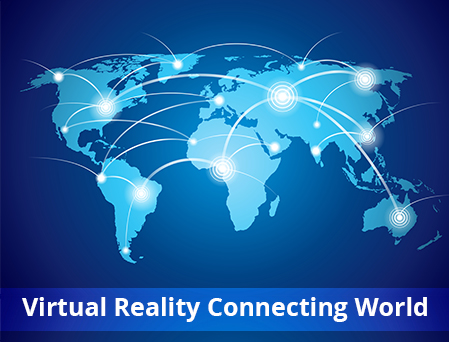“Virtual reality is the opportunity to walk a mile in someone else’s shoes” – Virtual Reality or as people fondly address it as VR has, undoubtedly, sparked a flame of revolution in the digital world. To begin with, Virtual Reality is a technology used to create an artificial environment with the help of software. Such is the precision and authenticity of VR that the user discards all the beliefs and accepts it as a real world. The application range of this technology is immensely diverse as it is used in several fields such as architecture, digital marketing, education, robotics, engineering, healthcare, social science, etc. to name a few. The two primary sources to feel and experience VR are sight and sound. However identical to every technology, it also has its limitations and shortcomings too.

Virtual Reality shows object way better than reality! Well, it may sound like an exaggeration but it holds true in maximum cases. Let’s take the simplest and most common example of video games when an individual with the VR kit and equipment is immersed in a game, it feels like a whole different world altogether. Furthermore, if it is a war game or a combat battle with the zombies, then the experience and feeling are flabbergasting. I would like to add here that being a gamer myself, it feels very close to reality as if the gamer is fighting the zombies in the real world because of the sound, graphics, and vibrations in the controller. However, having said all of this, VR is not at all affordable and not meant for every common person. The bigger fear is that a person gets totally lost in the VR World and starts getting disconnected from the real world.
Virtual Reality is also used for medical and military purposes extensively now days. Surgeons and soldiers are provided training through this technology to better their skills and achieve their mission. There are many Virtual Reality Companies that develop exclusive programs for such training at a reasonably high cost. While it helps the doctors and army with negligible risk and zero causality during the training regime, it also raises doubts whether an individual, performing these tasks in the virtual world, can perform similar tasks in real situation with equal acumen and accuracy. The results and performance could substantially differ in the real world as compared to the virtual world, which might make it doubtful for future uses.
Several entrepreneurs use Virtual Reality for Business such as tourism, educational institutes, and aviation. Although, we cannot deny the fact that it is of immense help to physically handicapped individuals as they can see any fort, tomb or monument much better than in the real world through this technology effortlessly. They can take a virtual tour of the whole place sitting at home, which otherwise could have been almost impossible to visit in reality, owing to the logistic hurdles. As for the aviation industry, VR simulators provide the safest possible atmosphere for training to pilots without an iota of danger. Today, in almost every urban city in India, a virtual reality company can be found with nonchalance and ease.
The Virtual Reality India market is still in a growing stage and it is a flourishing mode. However, the technology is not entirely flawless as there are still some random glitches in it. Also, several people have complained about motion sickness due to the extensive use of the VR headset. VR Developers India as well as abroad have taken cognisance of this issue and are working tirelessly to find a solution and eradicate it for once and all. This is one of the foremost reasons that Virtual Reality has not found global acceptance, especially in government works. Folks in administration are still reluctant and sceptical to use this tech in the highly classified and important missions. We strongly think that it will still take good 5-6 years before it gets global acceptance.
As per unconfirmed reports, the VR tech is expected to witness an annual growth of 76 percent in the coming years in the Indian market. Pre-dominantly, it is being used in the gaming sector in the country presently. However, taking a leaf out of European and American countries’ book, Virtual Reality is soon going to make its way in three prominent industries: Entertainment, Manufacturing, and Healthcare. It has been predicted that in the coming couple of years nearly 30-40 percent of the applications on the Smartphones will be based on VR, thus maximizing the reach to a broader audience. For the live audience and real people, virtual reality is no longer going to be a substitute.












